

Gardenia is often found in many homes and it bears many beautiful flowers.
Key Gardenia facts
Name – Gardenia
Family – Rubiaceae
Type – indoor plant, shrub
Soil – soil mix
Height – 6 ½ feet (2 meters) outside and 1 ⅓ to 3 feet (0.5 to 1 meter) indoors
Exposure: well-lit – Foliage: evergreen – Flowering: end of spring → mid-fall
Care, watering, pruning and repotting should help you enhance the blooming.
Growing gardenia isn’t always easy, particular care must be provided to boost gardenia growth and blooming. First of all comes planting and repotting.
Gardenia is most often used indoors in temperate climates because cool winters makes it impossible to grow gardenia out in the open.
Planting gardenia outdoors is only possible if the climate is warm in summer and mild in winter, because it cannot survive freezing.
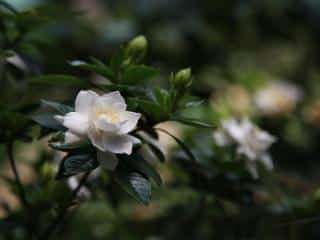 Choose a spot that is protected from wind, a bit sunny but not too exposed, part shade ideally.
Choose a spot that is protected from wind, a bit sunny but not too exposed, part shade ideally.If you’re growing your gardenia in a pot, repotting every 2 to 3 years is prescribed. The plant needs space to grow, and a tight pot would alter its development.
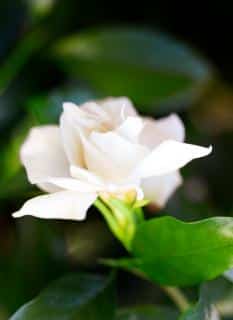 In certain specialized horticulture stores, special gardenia soil mix can be found.
In certain specialized horticulture stores, special gardenia soil mix can be found.Gardenia is often sold as a houseplant, but it’s relatively easy to multiply one on your own.
Read also: All about propagating gardenia
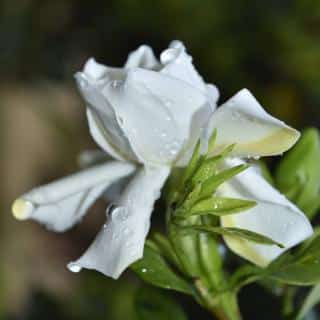 Gardenia doesn’t like hard water, so it is always best to water from collected rainwater or bottled mineral water.
Gardenia doesn’t like hard water, so it is always best to water from collected rainwater or bottled mineral water.
To recreate the moisture in the plant’s natural environment, you can place the pot on a bed of clay pebbles or gravel, and ensure the space between these is filled with water.
The water will slowly evaporate and remain in the vicinity of the plant: you have just re-created the plant’s native tropical environment!
It is important to water regularly without flooding the plant.
Wait for the surface of the soil to have dried out before watering again. Since gardenia needs very moist air to grow well, spray water on the leaves, but stop doing so as soon as the plant is in full bloom.
Reduce the watering. Wait for the substrate to have dried out down to about as deep as your index finger will reach. When the soil is dry to that point, water again.
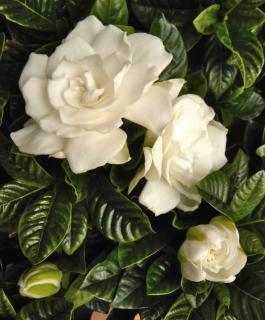 After the blooming, prune your shrub lightly to retain its tight, compact shape while reducing the branches by ⅓.
After the blooming, prune your shrub lightly to retain its tight, compact shape while reducing the branches by ⅓.
Remove wilted flowers regularly, since this stimulates production of new flowers.
In order to reinforce the plant and produce spectacular blooming, provide it with special heath plant fertilizer.
Repotting in spring every 2nd year in a blend of heath and soil mix is needed to bolster proper plant growth.
When grown as an indoor plant, gardenia may encounter most diseases, insects, parasites and mites that attack house plants in general.
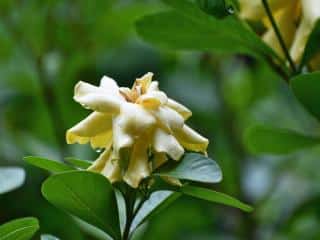 Most common parasites are aphids, scale insects and red spider mites.
Most common parasites are aphids, scale insects and red spider mites.
Note that if your gardenia leaves turn yellow, but the veins and ribs stay green, you’re probably dealing with chlorosis resulting from water that is too hard.
If the flowers fall off before opening up, lack of ambient air moisture is certainly the cause. Spray soft water on the leaves and unopened flowers, but stop when the flowers have opened up or spots will appear.
There are several hundred different gardenia varieties. Some do better indoors than others.
Though originally a tropical plant, a few recent varieties are frost-hardy:
 Gardenia is certainly one of the most beautiful indoor plants.
Gardenia is certainly one of the most beautiful indoor plants.
Native to tropical and sub-tropical regions of Africa, Asia and Oceania, people usually love it for its abundant flowering. Additionally, gardenia releases a soft jasmine-like fragrance.
This plant will adapt to living indoors very well, as long as moisture levels are very high. Never place it near a radiator or heat source. It’s important to keep it from dehydrating.
Outdoors, it requires very mild climate, without any frost or freezing in winter.
During winter, freezing would kill the plant, and you’ll have to bring it inside for protection.
After having purchased your gardenia, wait for the blooming to end and repot the plant: this will stimulate development and proper growth.
I just bought my gardenia plant from store. It started blooming and has lots of buds. I feel like I’m having to water twice a week to keep it from drying out. (The soil is dry about 2 in deep) I’m thinking it’s the soil. Maybe I need new potting mix. It also started getting yellow leaves. It sitting in a window with blinds and sheer curtains. Sunlight about 4-5 hours a day. I do live in a 5 zone. CO. My question is should I repot? I feel it’s early in spring to repot, but I don’t wanna stress my gardenia tree and kill it. I also bought a small humidifier because CO is so dry. Please any advice is helpful. Thank you.
Hi Olivia, nurseries often use soil that drains extremely well, and they tend to water once and sometimes even twice a day to speed growth up for their plants before selling them. Therefore, you’re correct in thinking repotting is needed. Go ahead and do it now! It will of course stress the plant a little bit, but the benefits of having fresh soil and a larger pot will make it worthwhile. You can get special gardenia soil, or if there isn’t any available, get heath plant soil instead (it just has to be a bit acidic and drain well). Repotting like this will make your twice-a-week watering routine more effective, though you might want to water every other day for a time until roots form throughout the entire new potting soil.
Nice job getting a small humidifier, too. Here are other tips to increase air moisture around your houseplant.
2 weeks ago when I fell, I tripped on my gardenia plant. It broke a limb partly, but the branch still has green leaves and new growth on it. Is there any way that I can finish disattaching the limb to have it continue to grow?
Dear Mary, I hope you didn’t hurt yourself in the fall! But better the gardenia breaking a limb than you :p
Gardenia will cope well enough with cuttings, if you wish to remove the branch. Simply make a clean cut and follow the usual steps for cuttings (removing lower leaves, ensuring moisture, using rooting hormones, etc). If the branch is long, you can make several cuttings at once, each about 4 inches or 10 cm long.
Another option is to make the best of the break and go for air-layering, also called marcotting. Hopefully the instructions are clear enough to easily be followed! If the branch is bent you can use Popsicle sticks to make a splint for the time it takes for roots to grow.